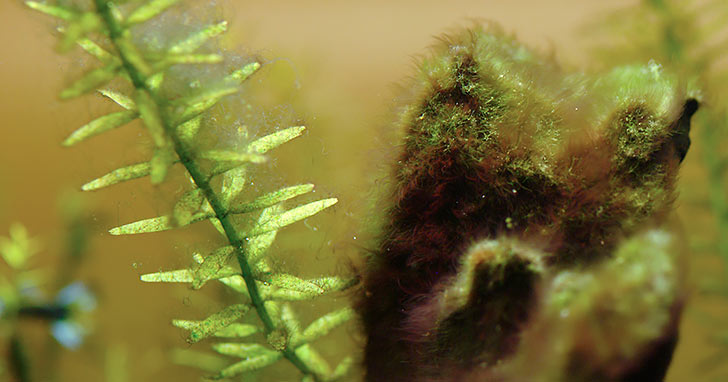
A common problem in aquarium-keeping is overfeeding. As uneaten food decomposes, it can cause a series of events that can seriously compromise water quality, including the release of lethal levels of ammonia and nitrite, as well as low oxygen and pH levels. Overfeeding also leads to a rise in phosphate, a favorite algal nutrient. In fact, overfeeding is the most common cause of aggressive nuisance algae growth.
Various circumstances can make optimum fish feeding difficult to achieve. Living in a household with multiple aquarium caretakers, relying on friends to feed your fish while you are vacationing, and simple carelessness can all lead to overfeeding. Automatic feeders are excellent for daily use and offer a great solution to overfeeding.
Automatic feeders dispense a premeasured amount of fish food into an aquarium at a preset time. You program the portion size and the feeding times. Most feeders accommodate granule, flake, and/or pellet fish food and can be programmed for as many as 8 daily feedings. You choose which feeder best fits your aquarium system. Most automatic feeders are designed with a moisture control feature so the fish food stays dry and fresh. Many are also battery operated, eliminating the need for an additional electrical outlet for the feeder.
Aquarists can control nuisance algae growth and other aquarium pollutants through proper feeding. Scheduled feeding, via an automatic feeder, is a simple and important first step in controlling excess algal nutrients. Set your automatic feeder to dispense multiple smaller feedings throughout the day. Observe your fish during feeding. If they have not eaten all of the food within a few minutes, you are feeding too much and need to adjust your fish feeder.
In fact, you might consider underfeeding, which is much less detrimental than overfeeding. Smaller dispensed portions encourage fish to forage. Remember, in the wild, fish are foragers. Hungry omnivores, such as mollies and other community fish, will eagerly eat algae, contributing to the overall health of the aquarium.
While proper feeding is important to aquarium health, good fish husbandry is crucial. Choose quality foods, make routine water changes, monitor phosphate and nitrate levels, and regularly replace mechanical filters to control algae and ensure a healthy aquarium system. |